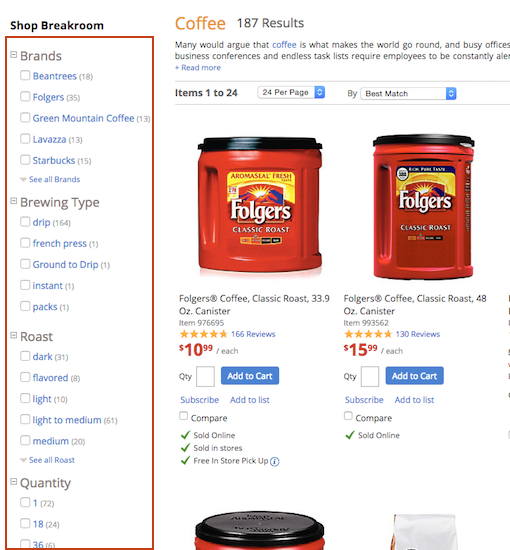Benefits of Server-side integration
With Discover, we only recommend server-side integration.
Reasoning
There are two main reasons we must implement Discover as a server-side integration.
Response time
A server-side implementation of Discover provides much faster response times than client side. That's because the retailer's e-commerce platform can request Omnichannel Personalization for personalized sorted list of products while it builds the rest of the page. Once Omnichannel Personalization responds with the personalized sorted list of products, they can be integrated into the rest of the category page and shipped back to the customer. In a client-side integration, the entire page must be generated by the server, sent to the browser, then a call to Omnichannel Personalization is made to request the personalized sorted list of products which are then injected into the page.
Facets
In addition, Discover currently does not support generation of facets. A facet is the navigational item found on the left-hand side of Search and Browse pages that enable the customer to choose what filters to apply. Here's an example.

Retailers with faceted navigation (over 90%) rely on their existing search and browse system (Endeca, Fred Hopper, SLI, Solr) to generate these facets. These Search and Browse systems live inside the retailer's cloud. Thus, the personalized sorted product list generated by Discover needs to be processed by the retailer's Search and Browse system to generate the facets. The personalized, sorted product list and the facets are then sent to the customer's device.
For these two reasons integrating Discover via a client-side integration is not supported.